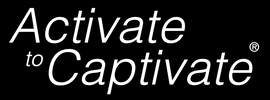|
Before giving a presentation, it is critical to check in with yourself and be realistic about your fears. No matter how confident you feel, there is always going to be that little voice in your head reminding you of the things you feel uneasy about. Instead of trying to quiet that voice — listen to it. Actively investigate what makes you feel nervous. Once you figure out why you are uneasy, you can take the necessary steps to overcome it.
BEFORE A PRESENTATION ASK YOURSELF: 1. What are you the most nervous about? If you know what you fear the most, you can take time to prepare so it doesn’t happen. If you normally speak too quickly, practice taking extra pauses during certain slides to naturally slow you down. If you are afraid of going over time, practice the whole presentation and time yourself. If your timing stays consistent over a couple rounds, you won’t be nervous about it when you go on stage. Once you realize what you fear the most, you can figure out a game plan to combat it. 2. What parts in the presentation do you always forget? It is an important clue if you always forget a certain key point. It means that your ideas don’t flow logically enough for you to connect your current idea to the next one. Notice if you have a pattern of “blanking” on a certain section. It means the logic behind those thoughts isn’t strong enough. Take the time to add in another transition sentence so that your ideas flow easily. 3. What parts of your presentation do you hate rehearsing? There is normally a reason you hate rehearsing a specific section. You either don’t feel confident in the material, fear someone asking you a question about it, or you aren’t prepared enough to present the material. The part you want to avoid practicing the most is normally the part you need to spend the most time on. 4. What questions are you worried about people asking? Your gut is normally correct — trust it. If you fear that someone will ask you a certain question or challenge a specific point, someone probably will. Take the time to write out the questions you hope people won’t ask. Go through the questions one by one and figure out your answers. However, you need to do more than just think about what you will say. You need to practice saying it. If you are a person who enjoys writing everything out, write out all the answers to the questions and then practice saying them out loud. Make sure you feel comfortable articulating your thoughts. If you don’t, your face and body language will show your insecurities. Instead, rehearse voicing your answers with clarity and ease. 5. What opposite views could derail your presentation? Take time to play devil’s advocate. What comments or questions could undermine your arguments? Write them out. Then practice giving clear, efficient and powerful answers. That way, if someone in the audience brings that point up, you won’t be flooded with panic. Instead, you will already have a strategy in place. SUMMARY When you give a presentation, you need to feel confident and prepared. The best way to do that is to take the time and investigate your fears. Face them ahead of time so you don’t bring them up on stage with you. This way your full focus can be on connecting with the audience and bringing your ideas to life. Comments are closed.
|
AuthorBri McWhorter is the Founder and CEO of Activate to Captivate. Categories
All
Videos
Archives
June 2024
|
Click to Contact
© 2014-2024 Activate to Captivate, LLC
All Rights Reserved
All Rights Reserved


 RSS Feed
RSS Feed
